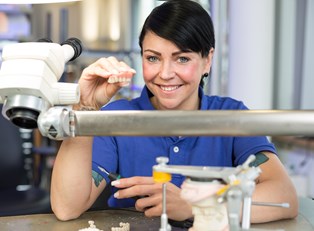While dental implants are normally used to address orthodontic or other medical problems, many people are increasingly turning to them for cosmetic reasons as well. In addition to filling any unsightly gaps where teeth are missing, dental implants are also more durable and comfortable than other dental devices, such as dentures. Here is a look at what cosmetic dental implants entail—including their creation, installation, risks, and maintenance.
Installing Cosmetic Dental Implants
To begin the dental implant process, an artificial tooth root is placed in the bone socket. After this, the patient must wait one to three months for this new root to heal and fuse with the jawbone before the procedure can continue. Once the healing process has been completed, dentists will install an abutment—which is used as a connector between the tooth root and new tooth. Finally, the tooth replacement, known as a crown, is bonded to the abutment.
Creating a Crown
Before the crown can be installed it must be created. To do this, dentists will take an impression of the patient’s teeth as a model for the new tooth. In addition to the shaping of the crown, dentists will also pay special attention to tooth color to ensure that the crown matches the general shade of the patient’s teeth.
Cosmetic Dental Implant Risks
While the process of getting cosmetic dental implants is relatively safe, there are a few risks associated with it. Immediately after the procedure, a patient’s highest risks are excess bleeding and infection; however, both of these can be avoided by following a dentist’s aftercare instructions. In the weeks following surgery, one of the bigger risks facing patients is a failure of the implant to fuse with the jawbone. Signs of this include pain and bleeding near the surgical area or a crown that is noticeably loose.
Caring for Cosmetic Dental Implants
Aside from the specialized aftercare that a dentist will recommend during the post-surgery recovery period, cosmetic dental implants only require normal maintenance—including brushing, flossing, and regular visits to the dentist.



